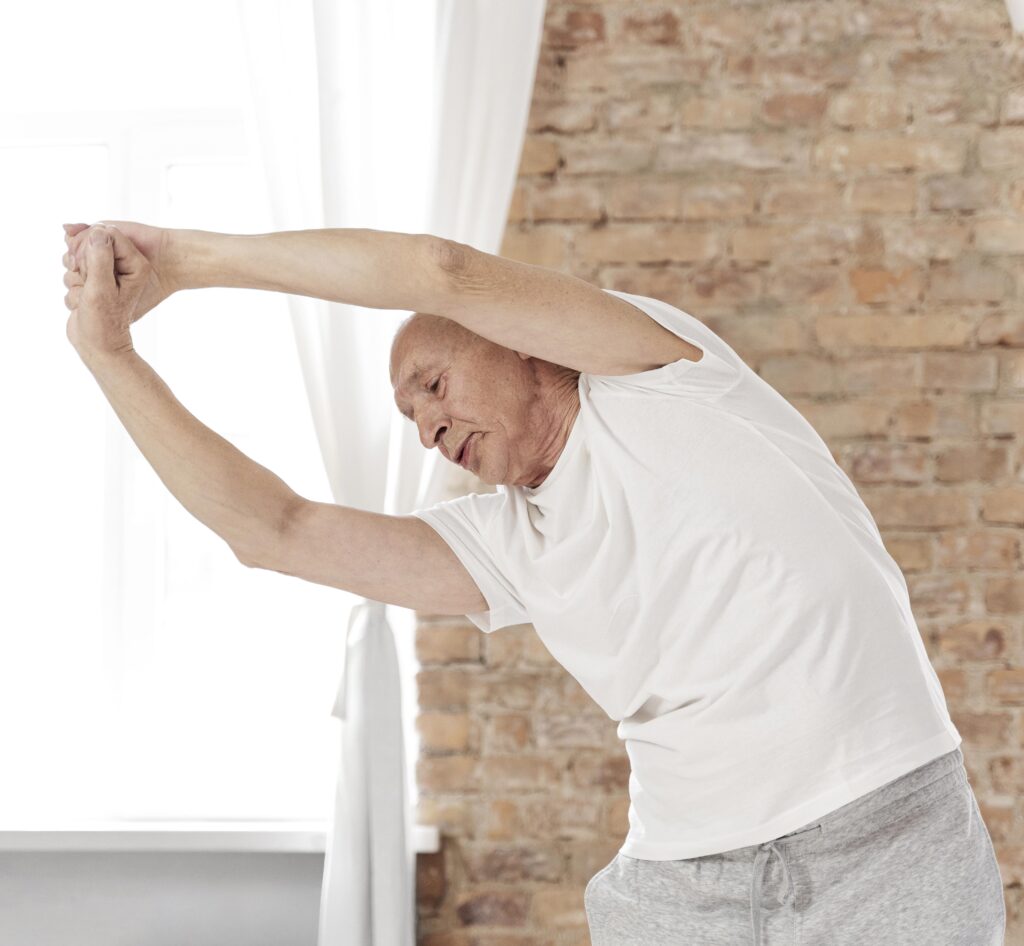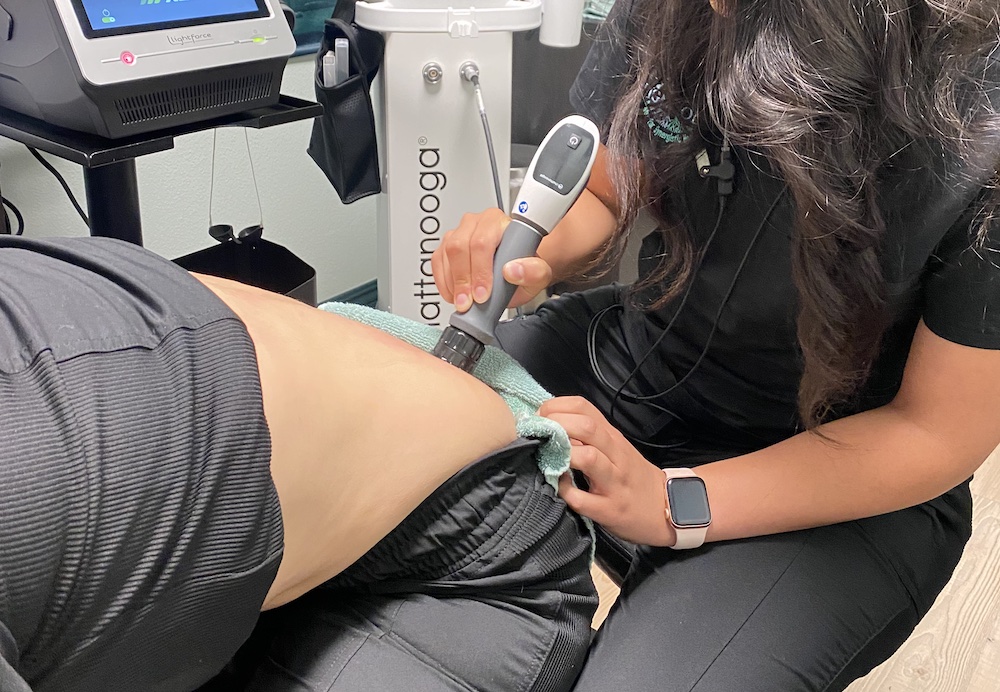As a local chiropractor, I want to share some insights on how gentle techniques can greatly alleviate neck pain. Many individuals struggle with discomfort, and instead of merely pushing through the pain, I encourage you to explore controlled movements and stretches. These approaches can help restore your flexibility and reduce stiffness in a safe and effective manner.
You might be surprised to learn that simple exercises, when done mindfully, not only aid in your healing process but also enhance your overall well-being. Incorporating these exercises into your daily routine can have a profound impact on your recovery journey.
Additionally, relaxation techniques play a pivotal role in healing. They can help ease tension in your body and promote a sense of calm, making it easier for you to recover from neck injuries. So, what specific strategies can you include in your daily life to support your healing? Let's discuss some effective methods that can enhance your recovery and improve your quality of life.
Understanding Neck Pain Causes
As a local chiropractor, I want to help you understand the various causes of neck pain so you can find the relief you deserve.
One of the most common reasons for neck discomfort is muscle strain, often due to poor posture or overuse. If you spend long hours hunched over your computer or frequently looking down at your phone, you may notice tension building in your neck muscles. This is something we can address through chiropractic adjustments and posture education.
Another potential cause of neck pain is a herniated disc. This condition occurs when the soft material inside a spinal disc bulges out and puts pressure on nearby nerves. If you've ever felt sudden pain or numbness radiating down your arms, it's possible that a herniated disc might be the issue. Chiropractic care can help alleviate this pressure and promote healing.
Injuries, such as whiplash from a car accident, can also result in significant neck pain. Whiplash can lead to inflammation and stiffness, making it challenging to move your head without discomfort. Our chiropractic treatments can help reduce inflammation and restore mobility.
As we age, arthritis can become a factor contributing to neck pain. Conditions like cervical spondylosis can wear down the discs in your spine, leading to pain and decreased mobility. With regular chiropractic care, we can work to improve your spinal health and manage symptoms.
Lastly, it's important to recognize that stress can have a physical impact too. When you're feeling stressed or anxious, your body may respond by tensing your neck and shoulder muscles, leading to discomfort. Chiropractic adjustments, combined with relaxation techniques, can be very effective in alleviating this tension.
Understanding these causes is the first step toward finding relief from neck pain. At our chiropractic clinic, we're dedicated to helping you restore your well-being naturally.
Importance of Gentle Movement
As a local chiropractor, I want to share with you the importance of gentle movement in your recovery after a neck injury. Many patients are unaware that gentle movement can play a significant role in healing. It not only helps improve blood flow but also alleviates stiffness, which is crucial for your overall recovery.
Incorporating safe motion techniques into your daily routine can help you gradually regain strength and flexibility, all while minimizing the risk of further injury. It's essential to listen to your body and start slow, allowing yourself to adapt to the movements.
Let me guide you through the benefits of gentle movement and introduce you to some effective methods you can easily incorporate into your life. Together, we can pave the way for your healing journey and enhance your well-being through natural, holistic practices.
Benefits of Gentle Movement
As a local chiropractor, I understand that after experiencing a neck injury, it can be tempting to stay still and avoid any movement. However, I want to emphasize the importance of gentle movement in your recovery process. Engaging in gentle movements can significantly aid in your healing journey. It promotes blood circulation, which is vital for recovery.
When you move gently, you enhance blood flow to the injured areas, delivering essential nutrients and oxygen that facilitate healing.
Incorporating gentle movement into your routine can also help relieve stiffness and reduce pain. Slow, controlled motions encourage your muscles and joints to remain flexible, preventing them from tightening up. This flexibility is crucial for regaining your full range of motion, which is a key goal in recovery.
Furthermore, gentle movement can have a positive impact on your mood. Even minimal physical activity triggers the release of endorphins—your body's natural painkillers. By engaging in these gentle movements, you aren't only taking steps toward physical healing but also nurturing your mental well-being.
Finally, embracing gentle movements empowers you during your recovery. It allows you to regain control over your body and progress at your own pace.
Techniques for Safe Motion
As a local chiropractor, I want to emphasize the importance of understanding safe motion techniques, especially for those of you recovering from a neck injury. Gentle movement is crucial for maintaining mobility while also preventing any further damage to your neck.
Begin by practicing slow and controlled movements. When turning your head, do so gradually. This allows your body to adjust without straining. A helpful tip is to use your eyes to guide the movement first—move your gaze in the direction you want to look before allowing your neck to follow. This can ease the transition and reduce discomfort.
Incorporating gentle stretches into your daily routine can also be beneficial. Simple neck stretches, such as tilting your head side to side or forward and back, can help. However, it's essential to listen to your body and avoid pushing yourself too far—stop if you experience any pain.
When transitioning from lying down to sitting up, I recommend rolling onto your side first. From there, use your arms to push yourself up. This technique helps keep your neck aligned and minimizes strain, making the movement easier and safer.
Additionally, consider using supportive pillows while you sleep to maintain proper alignment of your neck and spine. When you're sitting, be mindful to keep your back straight and choose a chair that provides good neck support.
Simple Stretching Exercises
As a local chiropractor, I want to share some simple yet effective stretching exercises that can help alleviate tension in your neck and improve your mobility. Many of my patients find that incorporating these gentle stretches into their daily routine significantly reduces discomfort and allows for greater freedom of movement in the neck.
Let's start with a basic neck tilt. Whether you're sitting or standing comfortably, slowly tilt your head to the right, bringing your ear towards your shoulder. Hold this position for about 15-30 seconds and focus on feeling the stretch along the left side of your neck. Once you're done, return to the center and repeat on the left side. This exercise is excellent for releasing tension and enhancing flexibility.
Next, I recommend trying the neck rotation stretch. Gently turn your head to the right, bringing your chin towards your shoulder. Maintain this position for 15-30 seconds, then return to the center and rotate to the left. This simple movement can significantly improve your neck's range of motion and help alleviate discomfort.
Another great stretch to consider is the chin tuck. Sit or stand up straight and gently tuck your chin towards your chest, creating a double chin effect. Hold this position for about 5 seconds before releasing. This exercise is beneficial for strengthening the muscles that support your neck, promoting proper alignment and posture.
Lastly, don't overlook the benefits of shoulder shrugs. Raise your shoulders towards your ears, hold for a moment, then relax them down. Repeat this several times to relieve tension in your upper back and neck area.
Relaxation Techniques for Relief
As a local chiropractor, I want to share some effective relaxation techniques that can greatly relieve neck pain. One of the first steps you can take is to practice deep breathing exercises. This simple technique not only calms your mind but also helps release built-up tension in your body.
Following that, you might find progressive muscle relaxation to be particularly beneficial. This method involves systematically tensing and then relaxing different muscle groups, which can significantly ease tightness in your neck and shoulders.
By integrating these techniques into your routine, you can enhance your comfort and flexibility, ultimately improving your overall well-being in daily activities.
Deep Breathing Exercises
As a local chiropractor dedicated to promoting natural healing and wellness, I want to share with you how deep breathing exercises can be an effective method for alleviating neck pain and tension. Engaging your diaphragm through these exercises not only fosters relaxation but also helps reduce stress throughout your body.
To get started, choose a comfortable position—whether sitting or lying down. Close your eyes and take a moment to center your focus on your breath.
Begin by inhaling deeply through your nose for a count of four, allowing your abdomen to gently expand. Hold that breath for just a moment, then exhale slowly through your mouth for a count of six, letting the air leave your body completely.
Repeat this process several times while concentrating on the natural rhythm of your breath. With each exhale, visualize any tension in your neck dissolving away.
In addition to deep breathing, you can enhance the relaxation benefits by incorporating gentle neck stretches. Tilt your head side to side or forward and backward as you breathe. This combination of deep breathing and stretching can be incredibly effective in releasing tight muscles and promoting overall comfort.
By practicing deep breathing exercises regularly, you not only address immediate discomfort but also cultivate a greater sense of well-being. This approach can empower you to better manage daily stressors and improve your overall health.
Progressive Muscle Relaxation
As a chiropractor, I want to introduce you to a technique called Progressive Muscle Relaxation (PMR), which can be a highly effective method for alleviating neck pain and tension. This practice involves systematically tensing and relaxing different muscle groups in your body, allowing you to better understand the contrast between tension and relaxation. By doing so, you can enhance your body awareness and release accumulated stress.
To get started with PMR, find a calm and comfortable space where you can focus without interruptions. You can either sit or lie down in a position that feels right for you. Begin by taking several deep breaths to help center your mind and body.
Start with your feet, tensing the muscles there for about five seconds before releasing the tension and noticing the wave of relaxation that follows. Gradually move up your body, working through your calves, thighs, and continuing to each major muscle group, including your arms and shoulders, until you reach your neck.
When you focus on your neck, tense the muscles by shrugging your shoulders up toward your ears. Hold that position for a few seconds, then let go. Take a moment to appreciate the contrast as the tension dissipates and relaxation takes over.
Once you've completed this cycle, take a few deep breaths and relish the feelings of relaxation that permeate your body. Regularly practicing PMR can significantly reduce neck discomfort and help you feel more balanced and relaxed in your everyday life.
As your chiropractor, I encourage you to incorporate this technique into your wellness routine, as it aligns perfectly with our focus on natural healing and overall health.
Heat and Cold Therapy
As a chiropractor dedicated to your health and well-being, I want to share some valuable insights on managing neck injuries through heat and cold therapy. These natural methods can be incredibly effective in alleviating pain and inflammation while supporting your body's healing process. Depending on your specific symptoms, you may find one technique more beneficial than the other, or you might even consider alternating between the two for optimal relief.
If you're experiencing stiffness or muscle tension in your neck, heat therapy can be a game-changer. Applying heat increases blood circulation to the affected area, helping to relax tight muscles and ease discomfort. There are various ways to apply heat: you can use a warm compress, a heating pad, or even enjoy a soothing warm shower.
Just remember to keep the temperature comfortable and limit your application to about 20 minutes at a time to prevent any skin irritation.
Conversely, if you're coping with swelling or acute pain, cold therapy may be the better option. Cold packs can numb the area and help reduce inflammation by constricting blood vessels. You can easily create a cold pack by wrapping a bag of ice in a towel or using a commercially available cold pack.
Apply it directly to the affected area for around 15-20 minutes, and be sure to take breaks between applications to allow your skin to recover.
Many of my patients find that combining both techniques yields the best results. Start with cold therapy to initially tackle inflammation, then follow up with heat to promote healing and relaxation.
It's essential to listen to your body and adjust the timing and method based on your comfort levels. With consistent application of heat and cold therapy, you can harness the power of these natural treatments to aid in your recovery from neck injuries.
When to Seek Professional Help
As a local chiropractor, I want to emphasize how crucial it's to recognize when to seek professional help, especially when dealing with neck injuries. If you're experiencing severe pain that doesn't seem to improve with simple home remedies like rest, ice, or over-the-counter pain relievers, it's important to reach out to a healthcare provider sooner rather than later.
Persistent pain, particularly if it radiates down into your arms or hands, may suggest nerve involvement, which requires immediate attention.
Additionally, if you start to feel numbness, tingling, or weakness in your arms or legs, don't ignore these warning signs. These symptoms could indicate more serious conditions, such as a herniated disc or spinal cord compression, and should be evaluated by a professional.
Also, if you experience headaches that feel different from what you're accustomed to, or if they intensify over time, seeking help is essential.
It's especially important to consult a chiropractor if your neck injury is the result of an accident or fall. Sometimes, you might feel fine at first, but symptoms can arise days or weeks later. Early intervention is vital in preventing long-term complications and ensuring a smoother recovery.
Moreover, if neck pain is interfering with your daily activities—like sleeping, working, or exercising—consider visiting a chiropractor. We specialize in providing personalized care and can guide you through various treatment options, including chiropractic adjustments, physical therapy, and other holistic modalities that may enhance your recovery process.
Trust your instincts; if something doesn't feel right, don't wait. Seeking the right care at the right time can significantly impact your healing journey and overall well-being. Your health is worth it, and I'm here to help you navigate that path towards recovery.
Conclusion
As a local chiropractor, I want to share how gentle techniques for neck injury relief can greatly enhance your recovery journey. It's important to first understand the underlying causes of your pain. By incorporating slow movements, gentle stretching exercises, and relaxation techniques into your daily routine, you can foster healing and improve flexibility in your neck.
Additionally, utilizing heat and cold therapy can provide extra comfort and relief during this process. If your symptoms persist, please don't hesitate to reach out for professional assistance. Your well-being is our top priority, and with the right approach, you can achieve relief while also regaining strength and mobility in your neck. Embrace these natural healing methods, and let's work together towards a healthier you!



